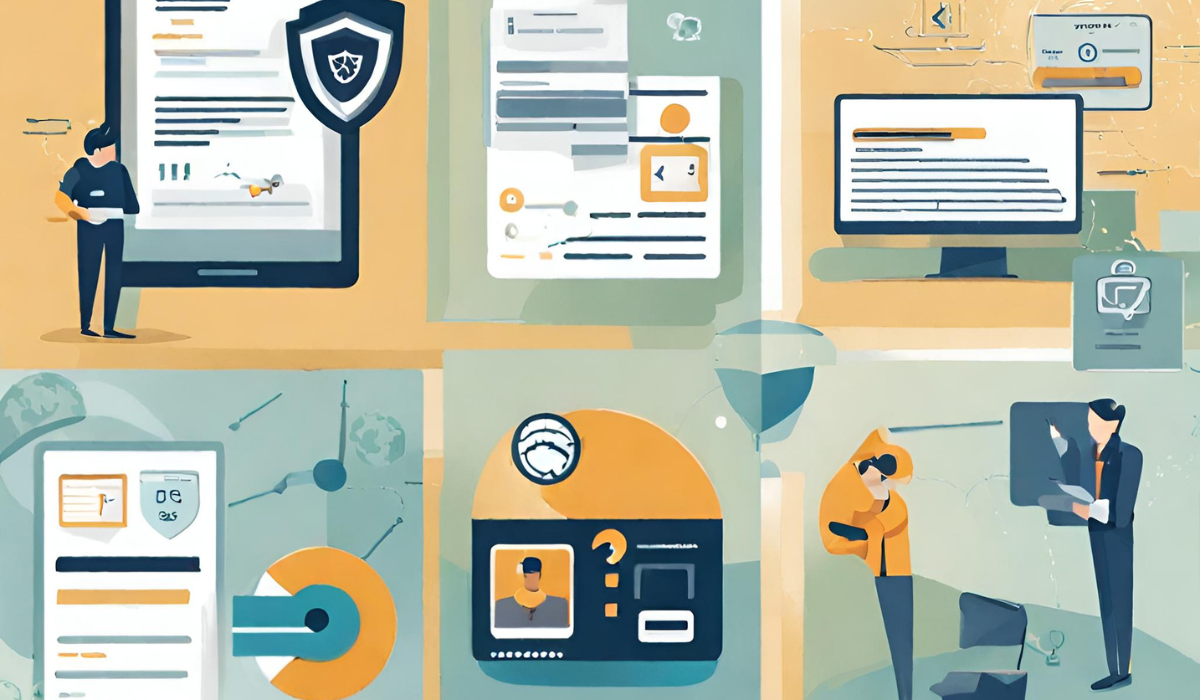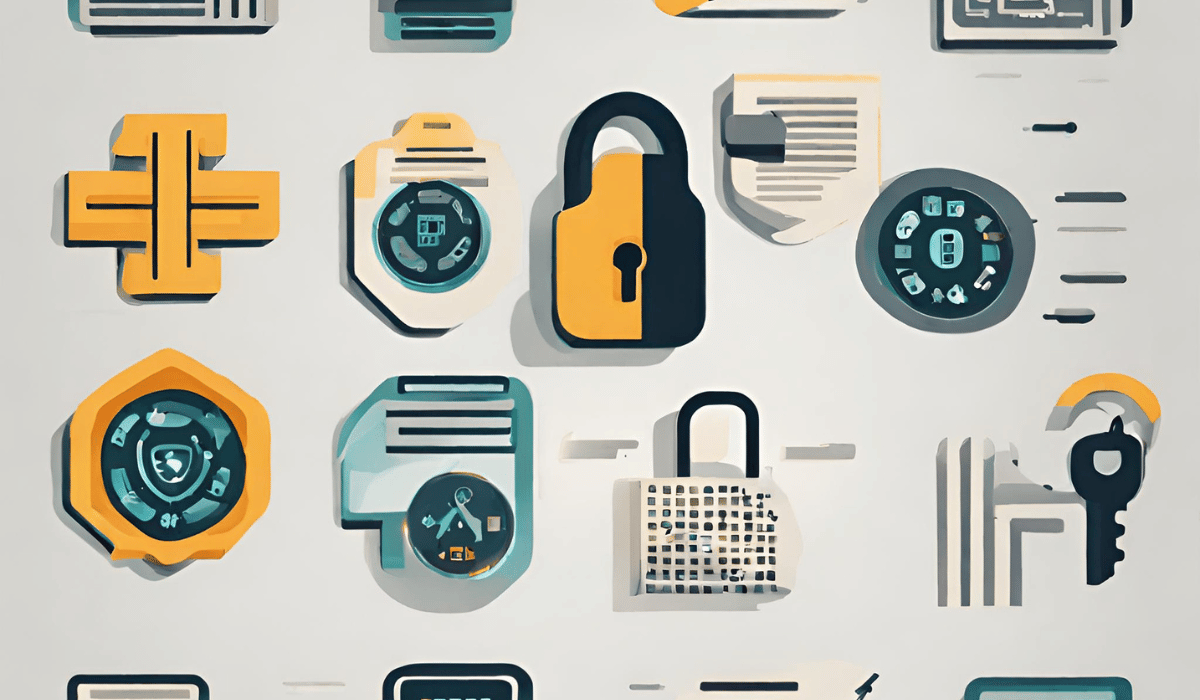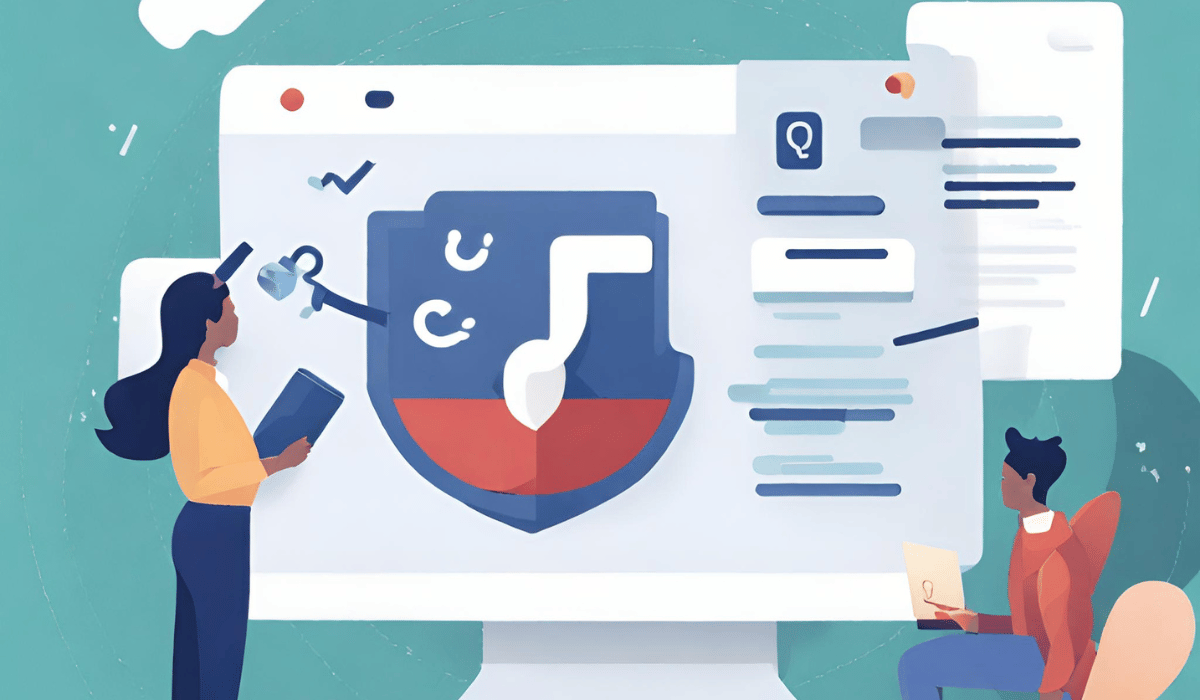Quizlet And Its Advanced Encryption Technique: How Does It Secure Data?
Introduction
Quizlet is an online learning platform that allows users to create and share study materials such as flashcards, quizzes, and games. As with any online platform, security is a top priority for Quizlet, and the company uses advanced encryption techniques to secure user data.
Encryption Techniques Used By Quizlet
Quizlet uses a combination of encryption techniques to secure user data, including:
1. SSL/TLS Encryption: Quizlet uses SSL/TLS encryption to protect all data transmitted between users’ devices and Quizlet servers. This encryption ensures that any data exchanged between the user’s device and Quizlet’s servers are protected against interception and tampering by unauthorized third parties.
2. AES Encryption: Quizlet uses Advanced Encryption Standard (AES) to encrypt all user data stored on its servers. AES is a widely used encryption standard that provides a high level of security and is considered to be one of the strongest encryption algorithms available.
3. Hashing: Quizlet uses hashing to protect user passwords. Hashing is a process that converts plain text passwords into a unique and irreversible string of characters. This means that even if a hacker gains access to Quizlet’s database, they cannot read the passwords in plain text. Instead, they will only see the hashed versions of the passwords, which are useless without the corresponding salt (a random value added to the password before hashing) and a powerful computer to crack the hash.
4. Two-Factor Authentication: Quizlet offers two-factor authentication (2-factor authentication), which adds an extra layer of security to user accounts. This means that in addition to entering a password, users must also provide a second form of verification, such as a code sent to their phone or email. This helps prevent unauthorized access even if a hacker manages to obtain a user’s password.
5. Regular Security Audits: Quizlet conducts regular security audits to identify and address potential vulnerabilities in its system. This includes performing penetration testing, which involves attempting to hack into their system and identifying any weaknesses that can be exploited by malicious actors. These audits help ensure that Quizlet’s security measures are up-to-date and effective in protecting user data.
6. Data Encryption: Quizlet also uses encryption to protect user data. This means that any data transmitted between the user’s device and Quizlet’s servers is scrambled and can only be decrypted with a specific key. This helps prevent unauthorized access to user data while it is in transit.
7. User Education: Quizlet also strongly emphasizes user education when it comes to online security. They provide resources and tips for users to protect their accounts and personal information, such as using strong passwords, enabling two-factor authentication, and being cautious of phishing scams.
The Importance Of Data Security
Data security is of utmost importance in today’s digital age. With the increasing amount of personal and sensitive information being shared online, it is crucial to ensure that this information is kept safe and secure.
Data breaches can result in identity theft, financial loss, and other serious consequences. This is why companies and organizations must take measures to protect their users’ data.
One way to ensure data security is through encryption, which involves converting data into a code that can only be deciphered with a key. Another important measure is to regularly update security software and protocols to stay ahead of potential threats.
Users can also take steps to protect their data by using strong passwords, avoiding public Wi-Fi networks, and being cautious about sharing personal information online.
Overall, data security is essential for protecting individuals’ privacy and preventing potential harm from data breaches.
Encryption Techniques
Encryption is a technique used to convert plain text or data into a code that can only be deciphered with a key. Several encryption techniques can be used to protect data, including:
1. Symmetric Encryption: This technique uses a single key to encrypt and decrypt data. The same key is used for both processes, making it faster and more efficient than other techniques.
2. Asymmetric Encryption: This technique uses two keys, a public key, and a private key, to encrypt and decrypt data. The public key is shared with others, while the private key is kept secret. This technique is more secure than symmetric encryption but can be slower and more complex.
3. Hashing: This technique converts data into a fixed-length code, known as a hash, that cannot be reversed. This technique is commonly used to store passwords securely.
4. Digital Signatures: This technique uses a combination of hashing and asymmetric encryption to verify the authenticity of a message or document.
Quizlet, Which Program Incorporates An Advanced Encryption Technique That Can Be Used To Hide Data?
Quizlet is an educational platform and does not incorporate an encryption technique to hide data. However, there are various encryption techniques available for data protection, such as AES, RSA, and SHA-256.
Advanced Encryption Techniques
Advanced Encryption Techniques (AET) are cryptographic methods used to secure data and protect it from unauthorized access. These techniques use complex algorithms and mathematical functions to transform plain text into unreadable cipher text. Some examples of advanced encryption techniques include AES, RSA, and SHA-256. AES (Advanced Encryption Standard) is a widely used encryption algorithm that uses a symmetric key to encrypt and decrypt data. RSA (Rivest–Shamir–Adleman) is a public-key encryption algorithm used for secure data transmission. SHA-256 (Secure Hash Algorithm 256) is a cryptographic hash function used to generate a unique digital fingerprint of data for verification purposes.
The Need For Advanced Encryption Techniques In Quizlet
Quizlet is an online learning platform that allows users to create and share study materials. As such, it deals with a lot of sensitive information, including the personal information of users and their study materials. This information needs to be protected from unauthorized access and theft. Advanced encryption techniques are essential to ensure the security and privacy of this information. Without advanced encryption techniques, sensitive information can be easily intercepted and stolen by hackers or malicious actors. This could lead to identity theft, financial loss, or other serious consequences. By using advanced encryption techniques like AES, RSA, and SHA-256, Quizlet can ensure that its users’ information is secure and protected from unauthorized access.
Benefits Of Using Quizlet’s Encryption Technique
Using Quizlet’s encryption technique offers several benefits, including:
1. Protection of sensitive information: Quizlet’s Encryption Technique ensures that users’ sensitive information, such as passwords and personal data, is protected from unauthorized access.
2. Compliance with regulations: Many countries have regulations in place that require companies to protect users’ data. By using advanced encryption techniques, Quizlet can comply with these regulations.
3. Increased user trust: When users know that their information is protected, they are more likely to trust the platform and continue using it.
4. Prevention of data breaches: Encryption makes it more difficult for hackers to access users’ data, reducing the risk of data breaches.
5. Improved reputation: By taking the necessary steps to protect users’ data, Quizlet can improve its reputation as a trustworthy and reliable platform.
Which Program Incorporates An Advanced Encryption Technique That Can Be Used To Hide Data?
Several programs incorporate advanced encryption techniques to hide data. Some popular examples include VeraCrypt, TrueCrypt, and BitLocker. These programs use various encryption methods to secure data, such as AES, Twofish, and Serpent. It is important to note that the effectiveness of these encryption techniques depends on several factors, including the strength of the encryption algorithm, the length and complexity of the encryption key, and the implementation of the encryption process.
Advancements In Encryption Techniques
Encryption techniques have come a long way since their inception. With the increasing demand for secure data transmission and storage, researchers and developers are constantly working on improving encryption methods. Some of the recent advancements in encryption techniques include:
1. Homomorphic Encryption: This technique allows computations to be performed on encrypted data without decrypting it first. This means that sensitive data can be processed without exposing it to potential security threats.
2. Quantum Cryptography: This technique uses the principles of quantum mechanics to create unbreakable encryption keys. It is based on the fact that any attempt to measure a quantum system will alter its state, making it impossible to intercept the key without detection.
3. Post-Quantum Cryptography: With the advent of quantum computers, traditional encryption methods may become vulnerable. Post-quantum cryptography is a new class of algorithms that are resistant to quantum-based attacks.
4. Blockchain Encryption: Blockchain technology uses a decentralized, distributed ledger to store and verifies transactions. The data is encrypted using a combination of public and private keys, making it virtually impossible to tamper with.
These advancements in encryption techniques are helping to improve the security of sensitive data, making it more difficult for cybercriminals to gain unauthorized access.
Common Myths And Misconceptions About Encryption Techniques
There are several common myths and misconceptions about encryption techniques that can lead to misunderstandings about their effectiveness. Here are a few:
1. Encryption Is Only Necessary For Businesses Or Individuals With Something To Hide
This is a dangerous misconception. Encryption is essential for protecting sensitive information, regardless of whether or not it is considered valuable. For example, personal information such as social security numbers, medical records, and financial information should always be encrypted to prevent identity theft and fraud.
2. Encryption Is Unbreakable
While encryption can make it extremely difficult for hackers to access sensitive data, it is not completely unbreakable. As technology advances, hackers are constantly developing new methods to crack encryption codes. However, using strong encryption techniques can significantly reduce the risk of a successful attack.
3. Encryption Is Too Complicated For The Average Person To Use
While some encryption methods may be complex, there are many user-friendly encryption tools available that make it easy for anyone to encrypt their data. Additionally, many popular software applications, such as messaging apps and email providers, now offer built-in encryption features.
Ethical And Legal Issues With Encryption Techniques
Encryption techniques can raise ethical and legal issues, particularly in cases where law enforcement agencies need to access encrypted data for criminal investigations. Some argue that strong encryption methods can make it difficult for law enforcement to gather evidence and prevent crimes. On the other hand, others argue that individuals have a right to privacy and that encryption is necessary to protect sensitive information from hackers and other malicious actors. There have been debates and legal battles over whether companies should be required to provide law enforcement with access to encrypted data. Some countries have passed laws that require companies to provide such access, while others have taken a more hands-off approach.
Ultimately, it is up to individuals and organizations to weigh the benefits and risks of using encryption techniques and to make informed decisions about how to protect their data while also complying with legal and ethical obligations.
How To Ensure Data Security?

There are several steps individuals and organizations can take to ensure data security:
1. Use strong passwords: Strong passwords should be at least 12 characters long and include a mix of upper and lowercase letters, numbers, and symbols.
2. Use two-factor authentication: Two-factor authentication adds an extra layer of security by requiring a second form of identification, such as a code sent to your phone or email.
3. Keep software up-to-date: Software updates often include security patches that address known vulnerabilities.
4. Use encryption: Encryption scrambles data so that it can only be read by someone with the key to decrypt it.
5. Back up data regularly: Regularly backing up data ensures that it can be restored if it is lost or stolen.
6. Use a virtual private network (VPN): A VPN encrypts internet traffic and protects against hackers and eavesdroppers.
7. Be cautious with public Wi-Fi: Public Wi-Fi networks are often unsecured, so it is important to avoid accessing sensitive information while using them.
By taking these steps, individuals and organizations can help protect their data from unauthorized access and ensure compliance with legal and ethical obligations.
Conclusion
Quizlet’s encryption technique involves using TLS (Transport Layer Security) encryption to protect user data while it is being transmitted over the internet. This encryption helps to prevent unauthorized access and eavesdropping by hackers and other third parties. Additionally, Quizlet recommends that users take additional steps to protect their data, such as using strong passwords, enabling two-factor authentication, and avoiding public Wi-Fi networks. By following these guidelines, users can help ensure that their data remains secure and protected.
Advanced encryption techniques are essential for ensuring the security and privacy of sensitive data. As technology continues to advance, so do the methods used by hackers and other cybercriminals to gain access to private information. Advanced encryption techniques, such as those used by Quizlet, help to protect against these threats by making it nearly impossible for unauthorized individuals to decipher or intercept data that is being transmitted over the internet. This is especially important for businesses and organizations that deal with confidential information, such as financial data or personal information about clients or customers. By using advanced encryption techniques, these entities can safeguard their sensitive data and protect themselves from potential breaches or cyber-attacks.
Frequently Asked Questions (FAQs)
What Is Encryption And Why Is It Important?

Encryption is the process of converting plain text into a coded language that is difficult for unauthorized individuals to read. It is important because it helps to protect sensitive information from being accessed by hackers or cybercriminals. Encryption is used to secure data that is being transmitted over the internet, such as credit card numbers, passwords, and other confidential information. By using encryption, businesses and organizations can ensure that their data is protected and that their customers’ privacy is safeguarded.
How Does Quizlet Ensure Data Security?
Quizlet does have a comprehensive security program in place to ensure the protection of user data. This includes the use of encryption to secure data in transit and at rest, regular security audits and vulnerability assessments, and strict access controls to limit who can access sensitive data. Additionally, Quizlet has a dedicated security team that monitors for potential threats and responds to security incidents as needed.
Can Quizlet’s Encryption Technique Be Hacked?

It is always possible for any encryption technique to be hacked, as there is no such thing as a completely foolproof security system. However, Quizlet’s Encryption Technique is designed to be very strong and difficult to break, and they regularly update and improve their security measures to stay ahead of potential attacks. Additionally, Quizlet’s security team is constantly monitoring for any suspicious activity and will take immediate action if a breach is detected.
What Are The Future Advancements In Encryption Techniques?
Several future advancements in encryption techniques are being explored and developed. One area of focus is quantum cryptography, which uses the principles of quantum mechanics to create unbreakable encryption. Another area is homomorphic encryption, which allows data to be processed while still encrypted, making it more secure.
